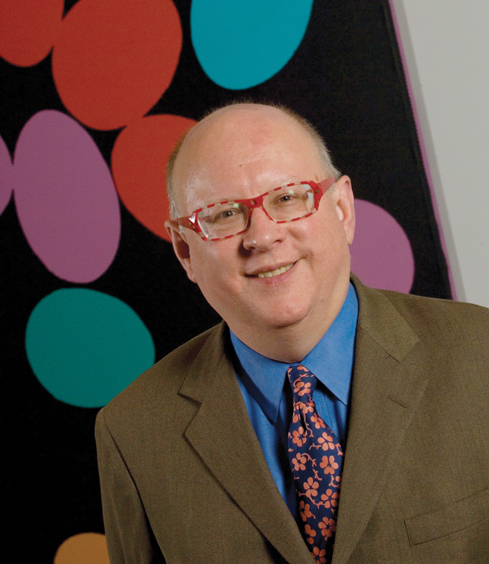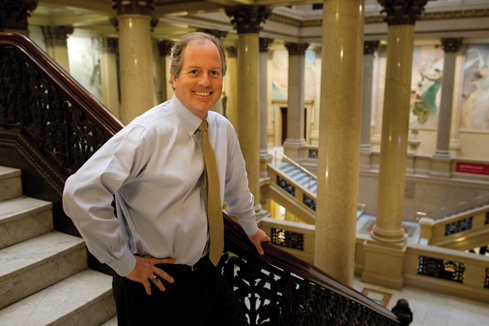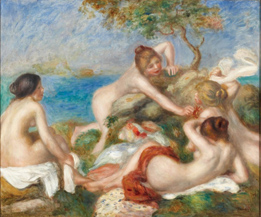 Spring 2011
Spring 2011|
Photo: Joshua FranzosNew Carnegie Museums president tall on experience, energyAs a seasoned museum director and a self-described sports junkie, it seems fitting that John Wetenhall is the new leader of the City of Champion’s largest cultural organization, Carnegie Museums of Pittsburgh. Wetenhall was named president of the 116-year-old institution this past January and officially takes the reigns on March 7. His impressive blend of attributes is what made Wetenhall the unanimous choice of Carnegie Museums’ board of trustees. “John immediately stood out to our committee, first on paper and then even more so in person,” says Lee Foster, chairman of L.B. Foster Company and chair of Carnegie Museums’ board of trustees, who led the extensive search. “He truly represents the next-generation museum leader, with an equal passion for museum mission and responsible fiscal management, and he has an energy and a confidence that makes for a great leader.” Well-schooled in both art history and business, having earned two master’s degrees and a doctorate degree in art history from Williams College and Stanford University, as well as an M.B.A. from Vanderbilt University, Wetenhall has devoted his career to museums and museum management, first as an art historian and curator, then as a museum director. He served eight years as executive director of The John and Mable Ringling Museum of Art in Sarasota, Florida, which, like Carnegie Museums, is a complex organization with multiple components, including a museum of art, a circus museum, the Cà d’Zan mansion, the Historic Asolo Theater, and 66 acres of grounds and gardens. “John is someone who always sees the big picture,” says Ford Bell, president and CEO of the American Association of Museums, of which Wetenhall is an active board member. “He’s a big thinker, he likes big ideas, and he’s also a roll-up-your-sleeves kind of leader. He led a very diverse organization in Florida, and what he accomplished there was amazing.” Wetenhall’s path began at the Birmingham Museum of Art, where he was curator of painting and sculpture and active in the museum’s $20 million building renovation. He then served as director of the Cheekwood Museum of Art in Nashville, Tennessee, where he initiated a series of regional art exhibitions, developed new educational programming, and led an $18 million capital improvement project that included a museum renovation, the establishment of a new contemporary art and education center, and the creation of a woodland sculpture trail. He became executive director of the Ringling Museum in 2001, and led it through a $95 million master plan that included the restoration of the Museum of Art and the Ringling mansion; the construction of a new circus museum, visitors pavilion, education/conservation complex, and temporary exhibitions wing; and the restoration of the Historic Asolo Theater, which hosts more than 250 events a year. Most recently, Wetenhall served as interim director of the Miami Art Museum where he helped draft a new strategic plan and initiated new financial procedures. “This is a magnificent opportunity,” says Wetenhall, who was born just outside of New York City and raised in New England. “Beyond the impressive collections, ambitious educational programs, and academic expertise of all four internationally acclaimed museums, the potential for collaboration among the arts and sciences sets Carnegie Museums apart.” Double Yoi! Renoir heads to Packer Country
Pierre-Auguste Renoir, Bathers with Crab, c. 1890-1899, Acquired through the generosity of Mrs. Alan M. Scaife and family
Fortunately, the museum’s prized French Impressionist painting—unlike the Lombardi Trophy—is only on temporary loan in Packers Country. The painting was part of a friendly wager between Carnegie Museum of Art and the Milwaukee Art Museum on the outcome of Super Bowl XLV between the Pittsburgh Steelers and the Green Bay Packers. Had the Steelers claimed victory, Carnegie Museum of Art would have played temporary host to the Milwaukee Museum of Art’s rare Boating on the Yerres by Gustave Caillebotte, another French Impressionist painting. In a Facebook post the day after the big game, the Museum of Art handled its loss with class and humor. “The game was certainly a nail-biter! And true to our word, the beautiful Renoir will have a short vacation in the Milwaukee Art Museum galleries. Wonder who we'll be wagering with next year?” 
Photo: Tom AltanyHe helped define The WarholActivist. Agitator. Visionary. Tom Sokolowski, the director of The Andy Warhol Museum from 1996 to 2010, earned a reputation as a progressive thinker who thrived on shaking things up in the name of contemporary art, civil rights, and unbuttoning a conservative Pittsburgh. After 14 eventful years, he resigned from his long-time post this past December, leaving a lasting legacy. Eric Shiner, the museum’s Milton Fine Curator of Art, is acting director while a search for a new director continues. Under Sokolowski’s leadership, The Warhol evolved into “more than a museum” (its mission) by initiating thoughtful, often provocative, community dialogue through its daring exhibitions, activist-minded educational outreach targeting at-risk youth, and its avant-garde performance-arts series, Off the Wall, now in its 11th season. The museum also became a welcoming venue for the city’s gay community with queer programming for teens, and established itself as an evening hot spot with its popular Good Fridays, which keeps the museum open late once a week with half-priced admission and a cash bar. Sokolowski has said he’s most proud of addressing subjects perhaps only The Warhol would risk, such as lynchings, eugenics, and Abu Ghraib. But perhaps Sokolowski’s farthest-reaching success is the expansion of Andy Warhol’s reach to five continents, traveling 56 exhibitions in countries as far flung as Korea, Russia, Australia, Argentina, and Kazakhstan. Attendance for the traveling Marilyns, Maos, and Brillo Boxes is approaching nine million. “By taking Warhol to the world,” Sokolowski said, “it’s a different way of introducing people to American culture instead of just dumping 65,000 pairs of Nike shoes on them.” Randy Dearth, chair of The Warhol’s board, says, “Tom led this museum with great heart and passion, and he’ll be greatly missed. He has, in fact, turned The Warhol into ‘more than a museum.’” Celebrating the region's best and brightest in scienceFor 15 years, Carnegie Science Center, in partnership with Eaton Corporation, has honored western Pennsylvania’s superstars of science and technology—local researchers, educators, and entrepreneurs—through its Carnegie Science Awards. This year’s winners, announced this past February, will be honored May 6 at a formal celebration at Carnegie Music Hall. Anousheh Ansari, co-founder and chairman of Prodea Systems and the first female private space explorer and space ambassador, will serve as keynote speaker. The program not only recognizes excellence, but helps fund initiatives that inspire careers in science and technology, including Science Center exhibits and educational programs that reach thousands of regional young people each year. Tickets are available at |
Reclaiming Paul Thek · Science for Life · Chasing Beauty · Setting Andy to Music · Special: Salute to David Hillenbrand · Face Time: Ragnar Kjartansson · Science & Nature: 100 Years of Homemade Lightning · Artistic License: Something to Believe In · The Big Picture
 |
Copyright © 2017 CARNEGIE Magazine. All rights reserved. |


 It was a one-two knockout punch for the black-and-gold faithful in February when the Pittsburgh Steelers let the franchise’s elusive seventh Lombardi Trophy slip through their fingertips, sending another Pittsburgh treasure with it: Carnegie Museum of Art’s Bathers with Crab by Pierre-Auguste Renoir.
It was a one-two knockout punch for the black-and-gold faithful in February when the Pittsburgh Steelers let the franchise’s elusive seventh Lombardi Trophy slip through their fingertips, sending another Pittsburgh treasure with it: Carnegie Museum of Art’s Bathers with Crab by Pierre-Auguste Renoir.